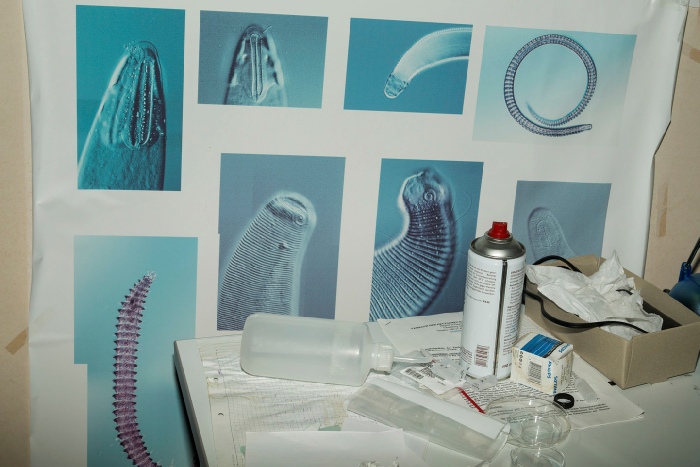E-
For more than 20 years now, Armin Linke's work has dealt with how mankind uses technology and knowledge to transform and develop the Earth's surface to adapt it to its needs. His films and photographs are observations of the changes humans have made to the land, oceans, and biosphere.
An earlier work of Linke's from that field of inquiry, The Anthropocene Observatory, a project by Territorial Agency (John Palmesino and Ann-

Armin Linke, Dialogues between ocean floor and water column
Edith-Russ-Haus for Media Art, Oldenburg (Germany)
06.07 - 24.09.2017

Linke accompanies scientists, representatives of leading research institutions, and local actors on their research trips and in their laboratories, to observe their different procedures and show the interconnections that affect all of their activities. Through his lens, we not only gain insight into crucial behind-
Inspired by Alien Ocean, a captivating book by anthropologist Stefan Helmreich on microbial oceanography, Linke met key actors and influential experts from the marine sciences. His interview subjects include marine biologist Prof. Dr. Antje Boetius, of the Alfred Wegener Institute Helmholtz Centre for Polar and Marine Research in Bremerhaven, and marine geologist Prof. Dr. Gerold Wefer, of the IODP Bremen Core Repository-
We review the expeditions undertaken by Prof. Dr. Ann Vanreusel and Prof. Dr. Peter Schupp onboard the research vessel Sonne, and Dr. Matthias Haeckel explains one of the world's leading marine sciences institutes GEOMAR -
Erik van Doorn, law expert, from the Walther-
Dr. Ursula Röhl, Marine geologist, shows the procedures at the International core repository at the University of Bremen, part of the Integrated Ocean Drilling Program, containing 154 km of deep-
In collaboration with the video archives of the GEOMAR, Helmholtz Centre for Ocean Research Kiel and Marum, Center for Marine Environmental Sciences, Bremen, Armin Linke edited film footage from several scientific expedition where high-
Rather than giving answers, Linke's project raises questions-
Oceans is an official project of the Year of Science 2016*17—Seas and Oceans, a program of the German Federal Ministry of Education and Research. The project was commissioned and co-
Armin Linke, OZEANE. Dialoge zwischen Meeresgrund und Wassersäule / OCEANS. Dialoges between ocean floor and water column, 2017. Multimedia installation. Courtesy of the artist. © ROV Video Archive Material GEOMAR -
Exhibition 6 July -


© ArtCatalyse International / Marika Prévosto 2017. All Rights Reserved